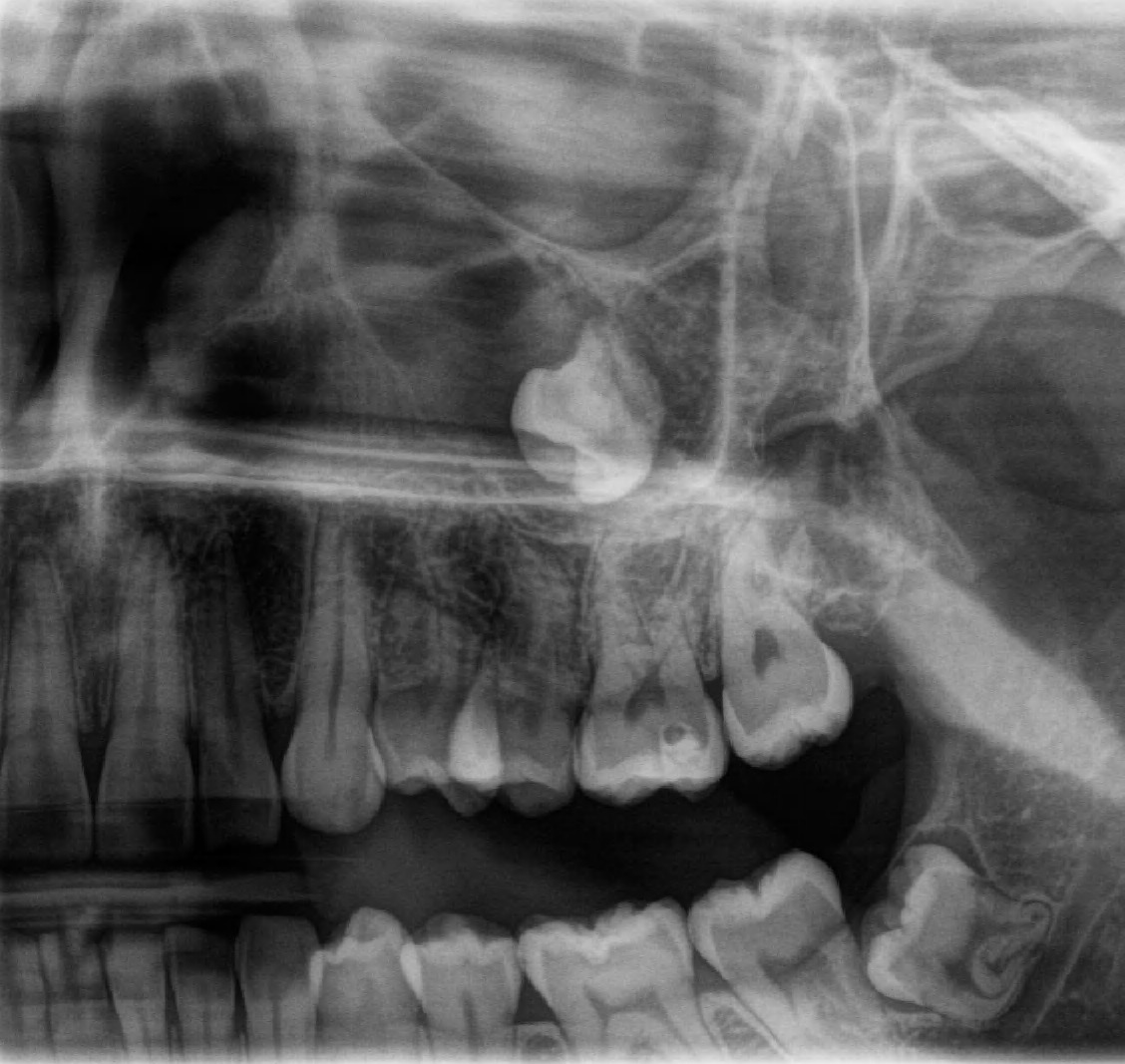Why do wisdom teeth have to be removed in the first place? Here is a quick summary of the reasons why wisdom teeth have to be removed and I also touched upon the point how NICOs form the empty space of the wisdom tooth.
The picture shows the case of my sister, a very special case, where the wisdom tooth is placed in the sinus area.
We need to ask the question as to why wisdom teeth play such an important role in western industrialised countries. They are often displaced transversely in the jaw, have insufficient room to erupt and therefore re- quire surgical removal. An error of nature?
No, more like an evolutionary error! At some stage, mothers in western industrialised countries began to reduce breastfeeding time, abandon it altogether or pump out breast milk and feed their babies by bottle. In addition to numerous other emotional and psychological advantages, however, breastfeeding is also responsible for ensuring that the jaw develops in a forward direction. In a sense, it is a type of orthodontic treatment:constant sucking at the mother’s breast over a period of several months exert an impact on thejaw.
If children are breastfed for one-and-a-half to two years, as intended by nature and as is still the norm in many communities that are close to nature,then the jaw would be large enough to provide sufficient space for the wisdom teeth after breast feeding.
In our society, this is generally no longer feasible, and the wisdom teeth therefore need to be surgically re- moved at a young age, usually between the ages of 12 and 20. This is not ideal, as this is the precise period during which young people suffer from general mineral deficiency due to a strong growth spurt and ,unfortunately, ampliefied by unhealthy eating habits. Now, all four wisdom teeth are usually removed at the same time, focusing on speed, meaning the shortest surgery times possible, very often even under general anaesthesia (ITN), which has negative ancillary effects on the immune system.
Usually,the wound is not fully cleaned and sterilised (e.g. using ozone), and is then consigned to secondary healing by way of an inserted strip plying a combination of antibiotics and cortisone, which blocks the immune system. Antibiotics are almost always givenorally, again weakening the immune system. The operation is usually very invasive(‘major surgery, major incision’) and trau- matic, and therefore involves severe swelling. However, this prevents the switch to the parasympathetic mode that is necessary for effective healing. In such circum- stances, the bone defect is unable to heal, which is why around 90 % of all wisdom tooth operations involve IO orNICO.This means that while the gum tissue and often also the hard bone underneath (known as ‘compacta’) do heal, there remains a cavity underneath, which is either completely empty or filled with pure fat or with a mixture of fat and dead trabeculae. This is also known as ‘chronic fatty degenerative inflammation’. The correct radiological term for NICO is “ostelysis of the jaw bone”.
I wish you a good start into the week, Coco.


